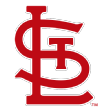Your ultimate guide to MLB’s October bullpens: Stars, surprises, rankings and more
Relievers have never mattered more than they do right now….

There are nine different matchups in the postseason — starting with two wild-card games, ending with the World Series — and last year’s nine winners all shared something in common: Their bullpens pitched better than the losing teams’ bullpens.
That’s not always true that the better relievers swing a postseason series, but it’s true a lot more often than not. The 2018 postseason was the third year in the past five in which every winning team’s bullpen allowed a lower OPS in the series than the losing team’s bullpen did. Over the past seven years, the team with the better bullpen performance has gone 48-14 in wild-card games or postseason series. (Excluding three wild-card games, when the winning starter threw a complete game.)
That makes this bullpen season, baby. Bring on all the pitchers you’ve never heard of. Watch them set the trajectory of history. Bring on the parade of names you spent the whole season not quite getting the hang of. Watch them get their managers fired and/or to the Hall of Fame. With each pitching change, look deep inside your heart and ask yourself, “Is that a man I can trust?”
This postseason will almost certainly make history: Relievers will face more batters than starters for the first time ever. Last year, they came within two batters of breaking that threshold — 49.96 percent of postseason time starred a reliever on the bump. Five years ago, that share was just 40 percent, but both the regular-season and postseason shares going to relievers have been rising steeply ever since. Relievers typically pitch about 20 percent more in the postseason than they do in the regular season, and if that holds this October then we’ll see relievers for about 52 percent of our postseason innings.
You can’t understand the postseason without understanding the relievers who will be dominating it — and who will, as well, be blowing it.
So here is your Ultimate Bullpen Preview. Some terms you’ll need to know:
Mnemonic to keep the final 15 outs of the game straight: A pattern to help you remember each team’s five or six highest-leverage pitchers in order, from the first you might see in a 4-2 game to the last. Don’t ever assume a starting pitcher is going to go more than four innings in the postseason. The endgame starts early, and managers have a plan to get the final 15 (or sometimes 18, or even 27) outs without using a pitcher they don’t trust.
Bullpen Poochie: A term, probably invented by Rays analyst Jeff Sullivan, to describe the reliever in the bullpen everybody is thinking about all the time, especially when he’s not in the game. Origin: the episode of The Simpsons in which Homer says, of an animated TV character he voices named Poochie, “Whenever Poochie’s not on screen, all the other characters should be asking, ‘Where’s Poochie?'”
This year’s bartender: The pitcher whose rise to bullpen relevance this year was most unforeseeable, whether a month ago, six months ago or five years ago. Origin: pop-up relief ace Tom Wilhelmsen, who famously spent six years out of baseball, sometimes bartending, before briefly emerging as a major league relief ace earlier this decade.
Pitching Ninja bait: A pitcher whose pitches are so unrepentantly sexy they are likely to be turned into GIFs by invaluable Twitterer, @pitchingninja.
These eight playoff teams are ranked, worst to first.
Jump to a bullpen …
Astros | Braves | Cardinals | Dodgers
Nationals | Rays | Twins | Yankees
8. Washington Nationals
Mnemonic to keep the final 15 outs of the game straight: Suddenly, Volcanoes & Storms & Rockslides & Hurricanes & Doom! (or: Wander Suero -> Austin Voth -> Hunter Strickland -> Fernando Rodney -> Daniel Hudson -> Sean Doolittle)

Bullpen Poochie: We saw it in the wild-card game: It’s Stephen Strasburg, it’s Max Scherzer, it’s Patrick Corbin, it’s every super-aggressive opportunity Dave Martinez can find to get his ace starters (and, probably, Anibal Sanchez, too) into games they’re not starting. The model here is Boston last year: a bad bullpen (though not nearly as bad as the Nationals’) that found its heroes in spillover innings from starters Chris Sale, David Price, Rick Porcello and Nathan Eovaldi. As I wrote at the time, Boston’s starters “were collectively the elite closer every team wants in October, and they were cooked up entirely out of ingredients lying around the pantry.”
That’s Washington’s best way forward with the bullpen they actually have. Anticipate that in most games there will be a starter available in relief, either because it’s his throw day, or because he’s already made his last start in the series, or because it’s a must-win clincher. Indeed, to that last scenario, I’d bet that if the Nationals win the World Series — and maybe any series going forward — it won’t be their closer who gets the final out, but one of Strasburg, Scherzer or Corbin pitching in relief.
This year’s bartender: Rodney was never a bartender — he’s second among all active pitchers in career saves, as a matter of fact — but his status in the middle of a postseason bullpen is, nevertheless, one of those bullpen miracles. At the end of May, he was released, with an ERA of 9.42, the fifth-worst WHIP in the majors and nearly as many walks as strikeouts. He was the oldest player in the majors, by three years.
The Nationals — 24-33 at the time — signed him and sent him to Triple-A, where at 42 years old he walked nine batters in eight innings, with a WHIP of 2.13. That got him called up, and he began the hard work of lowering his season ERA, all the way down to … well, to 5.66. But he was pretty good as a National, pitching the seventh or eighth inning in close games. He was about as good as he was in 2018, when he was on the A’s postseason roster, or 2017, when he was on the Diamondbacks’ postseason roster.
Rodney has done this sort of turnaround a bunch. That’s how he became the oldest player in the majors in the first place. In 2015 he had a 5.68 ERA in Seattle, got traded for a little cash to the Cubs, and had a 0.75 ERA the rest of the way. And then the next year, he had a 0.31 ERA with the Padres, got traded to the Marlins for Chris Paddack, and had a 5.89 ERA the rest of the way. For that matter, after a brutal two years in Anaheim when he was “only” in his mid-30s, he went to Tampa Bay and had a 0.60 ERA, which is the second-lowest in history. Fernando Rodney’s career is a collection of mystery short stories, and everything you think you know changes at least twice per chapter.
Pitching Ninja bait: It has to be Tanner Rainey‘s slider, which had the highest whiff rate of any pitch thrown by any pitcher this year. (He also touches 101 mph with his fastball.) Only problem is that Rainey’s outlier strikeout rate is often undone by an even more outrageous walk rate. Out of 400 pitchers who threw 40 innings this year, his whiff rate was second; his strike rate was 372nd. It’s not clear yet whether Rainey will get the postseason call at all, as he was used mostly in low-leverage situations in the second half.
Tanner Rainey, Filthy 88mph Back Foot Slider…and Sword. ⚔️ pic.twitter.com/flINQhlfys
— Rob Friedman (@PitchingNinja) July 19, 2019
The bottom line: It was bad. This was a very, very bad bullpen, a bullpen that was worse than the Tigers’ or the Marlins’ or the Royals’ — three teams that averaged 107 losses this year. This was the worst bullpen in franchise history. It was the NL’s worst bullpen in the first half and, generously, the NL’s second-worst in the second half. It was the worst bullpen ever to make the postseason.
But, in fairness to Washington, the bullpen that gets you there isn’t always the one you’re stuck dancing with. Some names change — Trevor Rosenthal isn’t here anymore, while Hudson is — and the ones that stay the same come out of the short funks or tired-arm periods that might pollute their stats for the entire year. The Nationals used more relievers on no-days’ rest than any NL team this year — because they were so bad, they had no choice, but surely that took a further toll. (They had the fewest outings of more than three outs, though that might be because they didn’t have anybody capable of it.)
So, for example: Doolittle, the closer, has been one of the best relievers in baseball for almost a decade. He probably still is, but then what do we make of his career-worst ERA, career-worst FIP, career-worst WHIP? We might make of it that he was exhausted by August, having been worked fairly hard in June and July. Ten of the 27 runs he allowed — and five of the 11 homers he allowed — came in a nine-day stretch. He went on the injured list shortly after, with right knee tendinitis. He was very effective, if not overpowering, in September when he returned: Batters hit .111/.172/.222 off him. Maybe it was just the knee, or overusage. Or maybe he just needed a little regression to the mean.
The Nationals’ faith has to be that everybody they’ll throw this offseason has been good at some point not long ago — and Hudson, added at the trade deadline, was good this year. Suero had a snakebitten ERA, but he also had a better FIP than Josh Hader. Rainey sort of threw strikes in September. Rodney is an institution. And Voth, a very effective starter for Washington this year, could now be available in relief.
And if all else fails, just pencil Strasburg in for three innings of relief every day.
7. Atlanta Braves
Mnemonic to keep the final 15 outs of the game straight: Oddball Jazzmen Need Grittier Melodies (or: Darren O’Day -> Luke Jackson -> Sean Newcomb -> Shane Greene -> Mark Melancon)

Bullpen Poochie: The Braves don’t have a real relief ace, so much as they have five very different pitchers who are all good enough to be the third or fourth reliever on a pretty good staff. Jackson has the most potential to break out as something more this October. Just consider his penultimate outing this year: He faced four batters, struck all four out and got nine swinging strikes in 18 pitches. Jackson finished with the fifth-most strikeouts of any reliever in baseball this year, and both of his breaking balls — a high-80s slider and a mid-80s curve — are extreme ground-ball pitches, perhaps the most extreme ground ball breaking pitches in the game. He went more than one inning 10 times this year, and in those 10 outings he allowed one run in 18 innings, striking out 28 and walking two. He’s got the arm to be Poochie if he gets hot.
This year’s bartender: Based on what I knew one month ago, O’Day would have been the most unexpected pitcher to see in the 2019 postseason, because who knew he was still active? The Orioles traded him to Atlanta in summer 2018, but he never threw a pitch for them, as a hamstring strain and then a forearm strain kept him inactive until this month. During 15 months of inactivity, he apparently considered retiring, and I apparently considered him retired. He threw five innings in September, his first innings for Atlanta, and that got him on the postseason roster as a right-handed specialist. He was the first arm out of the pen in the first game of the LDS, to face exactly one batter: Paul Goldschmidt. That’ll be his role.
Pitching Ninja bait: It’s Jackson.
Luke Jackson with 3 straight Ks by Sliders & Swords. 🍔⚔️🍔⚔️🍔⚔️ pic.twitter.com/RfIFQpUyQO
— Rob Friedman (@PitchingNinja) May 16, 2019
The bottom line: The Braves went 28-16 in one-run games this year, the second-most one-run wins in baseball, which is a big reason they won six more games than their run differential would have suggested. This is normally when we would say “thanks to their excellent bullpen.” But the Braves didn’t have an excellent bullpen; they actually had the best offense in baseball from the seventh inning on. They were only 11th in the majors in bullpen ERA, 14th in bullpen win probability added.
Rather, the bullpen went through six months — or at least four-and-a-half months — of trying to figure things out. The Braves used five closers this year:
Arodys Vizcaino‘s season ended after just four outings
A.J. Minter‘s ERA went from 3.23 last year to 7.06 this year
Jackson was fine, but stumbled in July and got replaced by the high-profile addition of Shane Greene
Greene lost the job after three outings, having allowed as many earned runs (five) as he had with Detroit in the previous four months
Melancon, of all people, held the job the rest of the way
Melancon, Greene and Martin were all acquired at the trade deadline. That didn’t settle everything down: The Braves were still middle of the pack after the deadline and in September. But it did at least give them stability — until the first game of the playoffs, when right-hander Chris Martin strained his oblique while warming up. Martin was probably the third-best reliever in this bullpen, and got himself removed from this article. Curse missed opportunities.
6. St. Louis Cardinals
Mnemonic to keep the final 15 outs of the game straight: Weeding Broadens Gardeners’ Minds, Maybe? (or: Tyler Webb -> John Brebbia -> Giovanny Gallegos -> Andrew Miller -> Carlos Martinez)

Bullpen Poochie: It breaks my heart to say it’s not Miller, the original Modern Poochie. Miller still pitches high-leverage innings, but he’s not the multiple-inning force he once was, and more than half his appearances this year were actually less than an inning. Instead, the Cardinals need it to be Gallegos, the reliever they got back in the Luke Voit trade a little more than a year ago. He arrived with 30 career innings and a 4.75 career ERA, but broke out this year with the majors’ third-lowest batting average allowed (minimum 50 innings). His best pitch is a slider with unusual movement — it doesn’t move side to side, but down, almost like a spike curveball, sometimes even “backing up” to his arm side — that induced a 95th percentile whiff rate this year. That slider hit a lull in August, as his release point changed subtly and the pitch backed up more frequently. His September slider seemed to return to form. If he can dominate in October he’ll be a multi-inning threat, with 25 appearances of at least four outs (and eight of at least two innings) this year.
This year’s bartender: Brebbia was a 30th-round pick who was released after three years by the Yankees. He spent not just a quick recharge in independent ball but two full seasons, putting up a 0.98 ERA for Laredo in the American Association in Year 2. His pitching coach in Laredo describes it: “20-hour bus rides, it’s 115 degrees and you’re not making any money. … I told his dad, ‘I really think John is going to pitch in the big leagues.’ He kind of chuckled because it’s hard to get to the big leagues when you are in independent baseball.” But Brebbia had made some mechanical changes and added velocity, and the Diamondbacks signed him. Then the Cardinals claimed him in the Rule 5 draft. Since then, he’s got the 30th best reliever ERA in the majors, minimum 150 innings.
Pitching Ninja bait: It’s still Miller’s slider, which, more than almost any slider in baseball, sliiiiiiiiiides:
Andrew Miller, Disgusting 82mph Slider. 🤮 pic.twitter.com/bynrhG3g1g
— Rob Friedman (@PitchingNinja) April 24, 2019
The bottom line: The Cardinals have been without their 104-mph closer, Jordan Hicks, since late June, but Martinez held down the ninth afterward. He blew only one save, and even that one comes with excuses — it was a one-run game on the road against the mighty Dodgers, he inherited the tying run, and lost on a fairly weak ground-ball single. The club’s bullpen ended up just 0.03 runs behind the best ERA in the National League, and 0.01 runs behind the best FIP, but, of course, a postseason bullpen doesn’t always have much in common with the group that was pitching in April or May. The Cardinals’ bullpen ERA in September was just 24th in the majors, and Miller — used in both the eighth and ninth innings, depending on matchups — had a couple meltdowns.
But the Cardinals do one thing better than any other contending team with their bullpen: They keep the platoon advantage. They faced 57 percent of hitters with the platoon advantage, a higher mark than any playoff team. They’ll have three lefties in the LDS, with Miller, Webb and Genesis Cabrera. They also got two of their best setup men, Gallegos and Brebbia, accustomed to pitching multiple innings, with both of those pitchers in the top 10 for outings of at least four outs this year.
It’s not clear yet where the Cardinals will fit into the postseason trends of short starts and aggressive relief usage. All four of their playoff starters qualified for the ERA title — one of only three teams that had four horses like that — and their rotation was clearly their strength in the second half. But we’ve also never seen their manager, Mike Shildt, manage in October.
5. Minnesota Twins
Mnemonic to keep the final 15 outs of the game straight: Literary Man, Romantic Dunderhead: Romeo (or: Zack Littell -> Trevor May -> Sergio Romo -> Tyler Duffey -> Taylor Rogers)

Bullpen Poochie: It’s Rogers, the closer. For the first couple months of the season, the Twins used the lefty as a multi-inning reliever, sometimes letting him get the save but more often not. He’d just come in and mow through the heart of the order late in a game, whenever that needed to be done. By June he was the primary closer — and throwing harder than he ever had — but even then he was used very aggressively: His 12 saves of at least four-plus outs would have been the most by any closer since 2006, except Josh Hader had 15 this year. Given that experience, it’ll be a fun game to see how early we start wondering about him. He probably has a three-inning save in him this postseason, if the Twins can stay in the playoffs long enough and get him a lead against one of the superteams they’re in line to face. He sits at 95 mph with a sinker, has two breaking pitches he throws about half the time, and one of the half-dozen highest zone rates in baseball.
This year’s bartender: Randy Dobnak went undrafted out of West Virginia’s Alderson-Broaddus College, which had previously produced no major leaguers. He has said no team ever made it out to scout him. He began this season in High-A, driving for Lyft and Uber to try to cobble together a living wage. (He has boasted of his 4.99 Uber rating, with only one four-star review among a mass of 5s.) He ends it on a postseason roster, where he could be the longman in a “bullpen” game in LDS Game 4. Dobnak throws a low-90s sinker that has a 90th-percentile ground-ball rate, and he managed, in the year of the juiced ball, to allow only one home run against 118 batters. The nature of bartenders is they usually don’t have large samples of success we can depend on, so it’s not clear he can really handle the Yankees or Astros for three or four innings, but he could get a chance to prove it.
Pitching Ninja bait: By the end of the season, Brusdar Graterol threw the second-hardest sinker in the majors — in part because three pitchers ahead of him had suffered season-ending injuries, perhaps a cautionary detail. He just turned 21 and is a, er, bruiser: 6-foot-1 and 265 pounds. He finishes his 100 mph delivery squared up intimidatingly at the batter, like Bald Bull preparing to charge. He’s not reliably dominant yet — he spent most of the year in Double-A, doesn’t yet have a gaudy strikeout rate, and spent most of his 10 big-league outings in low leverage — but he’s got one of the prettiest fastball/slider combinations in this postseason:
Brusdar Graterol, Unfair 100mph Sinker. 😳 pic.twitter.com/06S8usrhG0
— Rob Friedman (@PitchingNinja) September 15, 2019
The bottom line: The Twins’ starting rotation crumbled in the second half, but the bullpen got better, especially once Duffey — who went two months without allowing a run before his final outing of the season — emerged as a setup ace to backfill Rogers in the seventh and eighth innings. It’s likely the Twins’ bullpen will be asked to handle a lot of innings, considering Minnesota’s starters were worst among playoff teams the third time through the order this year. Rocco Baldelli’s plan might look a lot like Aaron Boone’s in New York: three or four innings from the starter, then reflexively get somebody warming in the bullpen. The Twins’ staff isn’t nearly as famous as the Yankees’, nor as established, nor as hard-throwing — they actually have the slowest fastball velocity among postseason clubs — and, if you had to bet on one team’s bullpen going forward, you’d definitely bet on the Yankees. But the difference between each team’s top five relievers this regular season was not only small, the Twins’ unit actually had the slight advantage:
Twins’ top five: 2.74 ERA, 1.04 WHIP, 11.2 K/9, 3.10 FIP
Yankees’ top five: 2.80 ERA, 1.18 WHIP, 11.8 K/9, 3.12 FIP
4. Los Angeles Dodgers
Mnemonic to keep the final 15 outs of the game straight: Many Kooky Ballplayers Keep Urgently Making Jazzhands (or: Dustin May -> Adam Kolarek -> Pedro Baez -> Joe Kelly -> Julio Urias -> Kenta Maeda -> Kenley Jansen)

Bullpen Poochie: The best bet for this title is the 22-year-old May, a top starting pitching prospect who debuted in August. He probably won’t start the postseason as the Poochie, but in October it often takes only one or two outings for a pitcher to jump three spots on the bullpen chart. May — 6-foot-6 and rail thin, with a wild scorch of orange hair and huge spin rates on all his pitches — has the best stuff of anybody in this bullpen, including a high-90s fastball and a low-90s cutter. (Of his final 100 pitches this year, the slowest was 89.) In his final stretch of the season, after moving from the rotation to short relief, he threw 10 innings, struck out 14 batters and walked one, and held batters to a .152/.222/.182 line. The lone red flag in that stretch was he didn’t get all that many swinging strikes, but that could change if he unleashes his curveball, which was often his best pitch in the minors. He has mostly pocketed it in the majors — perhaps struggling to command it — but plans change fast in October.
This year’s bartender: Kolarek was an 11th-round pick who didn’t make his debut until he was 28, in 2017. He then spent more of his age-29 season in the minors than in the majors. But he has a funky, drop-down pitching motion, and he has finally emerged as one of the game’s premier lefty specialists. In the past two years, only three left-handers have allowed a lower OPS to left-handed batters: Hader, Aroldis Chapman and Giants closer Will Smith. Right-handers crush him, yes, so he might face five batters in the entire LDS, and they might be Juan Soto five times.
Pitching Ninja bait: It’s May:
Dustin May, Nasty 95mph Front Hip Sinker. 🤧 pic.twitter.com/0rt1y9tJHW
— Rob Friedman (@PitchingNinja) August 27, 2019
The bottom line: Jansen isn’t the game-stopper he once was: He had a career-worst win probability added this year, a career-worst eight blown saves, his velocity is down almost two mph from 2017 and it kept dropping bit by bit as the season went on. That said, he’s still pretty good, so it isn’t like the Dodgers have a liability in the ninth, or anywhere else in the bullpen, even if we do have to continually cite it as the team’s lone “weakness.” Compared to their lineup, their rotation, their defense and their depth it is, but the Dodgers’ bullpen tied for the best ERA in the National League!
It’s also better now than it has been all year. Maeda moved from the rotation to the bullpen, as he has done in the past two Octobers, and once again saw his strikeout rate shoot up as he leaned more heavily on his slider:
2017-2019 as starter (including postseason): 4.12 ERA, 1.18 WHIP, 9.8 K/9, .688 OPS
2017-2019 as reliever (including postseason): 2.87 ERA, 1.02 WHIP, 11.7 K/9, .635 OPS
He’s just one of the ways the Dodgers’ rotation depth ultimately contributes to bullpen depth: Urias, a perfectly qualified postseason starter, will be in the bullpen, giving the Dodgers a second lefty (along with Kolarek) in a postseason bracket that is otherwise notably short on left-handed matchup pitchers. Unlike Kolarek, Urias can face Soto or Freddie Freeman without having to immediately leave the game afterward. And you already know how high we are on May, another starter whose stuff will play up in the postseason ‘pen.
That leaves Baez and Kelly, two veteran nerve-rackers who, nevertheless, are used to the postseason and had fine seasons (especially after April). The Dodgers don’t have the best postseason bullpen, but, along with Tampa Bay, they can throw the most different looks at opponents, they have a variety of short/long guys, they spent September setting everybody up for the postseason, and the relievers won’t have to paint over the weaknesses of a thin starting rotation. The ninth innings will be a little scary, but they should be fine.
3. Houston Astros
Mnemonic to keep the final 15 outs of the game straight: Smelly, Rotten Jackfruit Hastens Premature Osteoporosis (or: Joe Smith -> Hector Rondon -> Josh James -> Will Harris -> Ryan Pressly -> Roberto Osuna)

Bullpen Poochie: It’s Pressly, who just returned from a month on the injured list and finished the season with four appearances, four shutout innings, seven strikeouts and two baserunners. Pressly was already a fine reliever with Minnesota before the Astros traded for him last summer. Then Houston told him to throw his breaking ball more often and he turned into a genuine relief ace, with the seventh-best WAR and fifth-best ERA among all relievers in that time. Last October, he threw almost 80 percent breaking balls in the postseason, and allowed one hit in five innings.
This year’s bartender: The Astros are so loaded with talent they don’t really do much shopping in the bartender bin. But here’s a note of appreciation for Harris: The Astros picked the former ninth-round pick off waivers just after his 30th birthday, back in 2014. He had thrown 99 career innings, with a 4.26 ERA. Since then he has the third-best ERA in baseball. He ended the season with an immaculate inning — three strikeouts on nine pitches — in his final outing.
Pitching Ninja bait: James, who was a top starting pitching prospect but has been in Houston’s bullpen this year. He was wild, man, but he also had the 13th-highest swinging strike rate in baseball this year, the 13th-fastest fastball, and nearly 15 Ks per nine innings. He struck out 20 and walked four in 10 September innings, and this is what it looks like when he’s in a GIF:
Josh James, 93mph Fastball…and ⚰️⚔️. pic.twitter.com/tGfayRM0op
— Rob Friedman (@PitchingNinja) July 21, 2019
The bottom line: The Astros are so strong at everything else that their bullpen is sometimes offered as the closest thing they have to a non-strength. But their relievers had the second-lowest ERA in the majors this year, and closer Osuna has plenty of postseason success on his resume. Their bullpen usage was pretty conservative this year — Osuna attempted only one save of more than three outs, for instance — and, with Justin Verlander/Gerrit Cole/Zack Greinke set to start most games, Astros relievers will probably be asked to throw fewer innings than any team’s except Washington’s. If there’s anything that really stands out from traditional bullpens, it’s that they have no lefty in the pen. But here’s how much that mattered: Lefties hit .204/.279/.360 against Houston relievers, which is worse than lefties hit against any other team’s bullpen.
2. New York Yankees
Mnemonic to keep the final 15 outs of the game straight: Great Otherwise, Kangaroos Break Chandeliers (or: Chad Green -> Adam Ottavino -> Tommy Kahnle -> Zack Britton -> Aroldis Chapman)

Bullpen Poochie: Technically I guess it’s Green, not so much because he’s better than the others but because the whole bullpen is Poochie. A team that’s trying to beat the Yankees is trying desperately to get a lead before Green or Ottavino starts warming up and gets the Yankees’ closing sequence rumbling. Green stands out in one way from his teammates: He’s the only one of them who regularly went multiple innings this season, sometimes as an opener — he started 15 games — and sometimes as a mid-inning bridge, covering innings 4-6 once and 5-7 five times. His overall numbers are a little weaker than his teammates’, but that’s mostly left over from a disastrous April. Since returning from the injured list in mid-May, he’s third in the majors in relief WAR (at FanGraphs), with 91 strikeouts and 15 walks in 60 innings. The standard take is that Chapman or Britton is the best reliever in this bullpen. The Galaxy Brain take is that right now it might be Green.
This year’s bartender: One year ago Kahnle had a 6.56 ERA and didn’t even make the Yankees’ postseason roster. He started this year pitching low-leverage innings in Yankees losses. Now he’s the main seventh-inning guy, with the second-best FIP and the highest whiff rate on the staff.
Pitching Ninja bait: I don’t know who the most-GIF’d reliever on Pitching Ninja’s feed is, but I count 66 different clips of Ottavino, whose glorious slider has the fourth-most movement of any pitcher’s:
Adam Ottavino, Slider Movement (front view). 🎢🤮 pic.twitter.com/xYPHQbMw1G
— Rob Friedman (@PitchingNinja) April 3, 2018
The bottom line: The Yankees’ regular-season reliever strategy was nothing like what we tend to associate with postseason reliever strategy. Their nominal ace, Chapman, never threw more than one inning in a game. For that matter, Britton did it only once and Kahnle only twice. They hardly ever used relievers on back-to-back days — only 83 times, lowest among contenders. They never used any of their top five relievers three days in a row, which is notably conservative. As Joel Sherman wrote in July, “The Yankees would rather sacrifice the singular game than push relievers to what the organization sees as a danger zone.” It worked: Five of their top six relievers (Dellin Betances, who missed almost all year with a preseason injury, is the exception) stayed healthy and effective through the end of the season.
Presumably, the calculus shifts now: Manager Aaron Boone has said the Yankees are “going to be a little untraditional,” which seems to mean short outings from every starter except James Paxton, and has said it’s “certainly possible” they’ll use an opener in some games. “New York is prepared to script each game with piggyback starters and six key relievers,” Tom Verducci wrote last month, when it looked like Betances might be healthy enough to be the sixth. The math on that, and the urgency of each postseason inning, means relievers will almost certainly have to go beyond their regular-season usage. Last year, the Yankees’ top relievers went more than an inning six times in the ALDS — though Chapman didn’t. In the 2017 postseason, they did it 20 times, including three times by Chapman.
The question, then, is whether the Yankees’ regular-season usage is about to pay off in a big way. It could: Their relievers are still strong, not fatigued from blowing past career-high innings totals or laboring through the summer. But it could also mean their relievers are about to be asked to pitch in unfamiliar ways, which relievers tend to gripe about. (See, for example, Chapman, who complained about longer outings in the 2016 postseason, after just one four-out save that regular season.) In recent years, we’ve sometimes seen contending teams do exactly the opposite: stretching out their highest-leverage relievers to prepare them for their postseason assignments. Anyway, the Yankees’ bullpen is great, for the third postseason in a row.
1. Tampa Bay Rays
Mnemonic to keep the final 15 outs of the game straight: Cash’s Postseason Roster Dreamily Anticipates Parades (or: Diego Castillo -> Colin Poche -> Chaz Roe -> Oliver Drake -> Nick Anderson -> Emilio Pagan)

Bullpen Poochie: They have an actual Bullpen Poche — Colin, who led the minors in strikeout rate in 2017 and 2018 and this year allowed the 10th-fewest hits per nine innings as a major leaguer. But anybody who watched the AL wild-card game knows now that the Poochie is Anderson, the reliever who warmed up (according to the broadcast) four times before finally getting into the game in the eighth and striking out four of the five batters he faced. Anderson had three of the most dominant months any reliever had this year. In April (as a Marlin) he struck out 27 while unintentionally walking zero in 13 innings. In August he struck out 22 while unintentionally walking zero in 12 innings. And in September he struck out 19 while unintentionally walking one in 10 innings. He had the seventh-best FIP in baseball this season, and the second best in the second half. His strikeout rate with Tampa Bay — 52% — is best in Rays franchise history by 10 percentage points.
This year’s bartender: A bunch of them. Drake last year set an all-time record by pitching for five different teams — and then got waived twice over the offseason. This year he not only pitched high-leverage innings for the league’s best bullpen, but he was devastating against lefties, with the lowest OPS allowed against them. (Notable especially because he’s right-handed. He throws around 80% splitters against them, and they hit just .147/.162/.196 against him.) Roe, whose slider has the most horizontal movement of any slider in baseball, pitched without much success for four teams before he became a Ray. He was still a minor league reliever when he was 30. Anderson’s backstory is much scarier: He wasn’t signed out of college in part because, after his role in a fight (he hit another person with a bat), he had spent eight days in jail. Before he ever reached affiliated ball he had spent three seasons in independent leagues and one pitching for an amateur team. He didn’t make his major league debut until this year, for Miami, having been acquired from Minnesota in a minor league trade last winter.
But Pagan’s the pick here. Last year, as an Oakland A, he pitched in the second-lowest leverage of any pitcher in baseball. He was a mop-up man. This year he’s the closer in the best postseason bullpen.
Pitching Ninja bait: It’s Castillo’s slider. Castillo, who also throws 100 mph with startling movement, threw two shutout innings in the wild-card game.
Diego Castillo, 5Ks in 2 innings on 15 Sliders (in 28 seconds). pic.twitter.com/vfAXPGbyuy
— Rob Friedman (@PitchingNinja) April 22, 2019
The bottom line: Here’s what a scout told Jeff Passan for ESPN’s playoff preview: “The way they piece their bullpen together is ridiculous. I’ve seen Andrew Kittredge up in the second inning and seen him close. Chaz Roe pitched in the eighth inning one day and (Blake) Snell was struggling in the second and Roe picked him up. They don’t work it conventionally. These guys have pieced together a very impressive group.”
Indeed, the Rays relievers are all used to coming into almost any inning, making this not just a formidable bullpen but one well-prepared for the urgency and unpredictability of postseason games. They had the most appearances on no-days rest this year, and the most multi-inning appearances. Here are the innings each of those top six relievers has appeared in this year:
Castillo: Every inning except the third
Poche: Every inning, first through ninth
Roe: Second, fourth, fifth, sixth, seventh, eighth, ninth
Drake: Third, fourth, fifth, sixth, seventh, eighth, ninth
Anderson: Fifth, sixth, seventh, and eighth
Pagan: Third, fifth, sixth, seventh, eighth and ninth
They also have Yonny Chirinos, a starter who will presumably be available in the bullpen this month, and Kittredge, who started seven games as an opener and finished the season with 10.5 Ks per nine and stats not unlike the six we’ve been focusing on here.
Three of the majors’ 11 lowest batting averages allowed are in the Rays’ bullpen: Pagan, Drake and Poche. They have four of the 20 most whiff-inducing fastballs in the majors: Pagan, Poche, Drake and Anderson. The bullpen as a whole had the best ERA in baseball, while throwing 100 more relief innings than any other postseason team. That this is probably the least famous collection of relievers in this postseason adds to the charm, but that designation might be endangered. The Rays relievers might be about to get really famous. ‘Tis the season for it.





